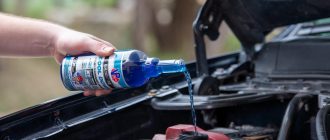A Part of a Car Engine
The Piston
The piston is a cylindrical-shaped component that moves up and down within the cylinder of an internal combustion engine. It is connected to the crankshaft by a connecting rod, which converts the reciprocating motion of the piston into rotational motion of the crankshaft. The piston is responsible for compressing the air-fuel mixture in the cylinder and then expanding it to drive the crankshaft.
Pistons are typically made of aluminum or cast iron. They have a slightly domed or concave top to provide a combustion chamber for the air-fuel mixture. The piston rings are fitted into grooves around the circumference of the piston. These rings help to seal the combustion chamber and prevent the air-fuel mixture from leaking out.
The Connecting Rod
The connecting rod is a metal rod that connects the piston to the crankshaft. It is responsible for transmitting the force of the piston’s movement to the crankshaft. The connecting rod is typically made of forged steel or aluminum.
The connecting rod has a big end that is connected to the crankshaft and a small end that is connected to the piston. The big end of the connecting rod is typically fitted with a bearing to reduce friction between the rod and the crankshaft. The small end of the connecting rod is typically fitted with a wrist pin, which allows the piston to pivot on the connecting rod.
The Crankshaft
The crankshaft is a rotating shaft that converts the reciprocating motion of the pistons into rotational motion. It is connected to the flywheel, which helps to smooth out the engine’s operation.
The crankshaft is typically made of forged steel or cast iron. It has a series of journals, which are supported by bearings in the engine block. The crankshaft also has a series of crankpins, which are connected to the connecting rods.
The Camshaft
The camshaft is a rotating shaft that controls the opening and closing of the valves in the engine. It is driven by the crankshaft through a timing belt or chain.
The camshaft is typically made of forged steel or cast iron. It has a series of lobes, which are shaped to open and close the valves at the appropriate times.
The Valves
The valves are mushroom-shaped components that control the flow of air and fuel into and out of the engine. They are opened and closed by the camshaft.
The valves are typically made of steel or titanium. They have a flat head that seals against the valve seat in the cylinder head. The valves are opened and closed by the camshaft, which pushes on the valve stem.
The Spark Plug
The spark plug is a device that generates an electrical spark to ignite the air-fuel mixture in the cylinder. It is located in the cylinder head and is connected to the ignition coil.
The spark plug consists of a central electrode and a ground electrode. The central electrode is connected to the ignition coil and the ground electrode is connected to the engine block. When the ignition coil is energized, it creates a high voltage spark between the central electrode and the ground electrode, which ignites the air-fuel mixture.
Conclusion
These are just a few of the key parts of a car engine. There are many other components that contribute to the operation of the engine, such as the intake manifold, the exhaust manifold, the water pump, and the oil pump.
The car engine is a complex and fascinating machine. It is responsible for converting the chemical energy of gasoline into mechanical energy that powers the car.





